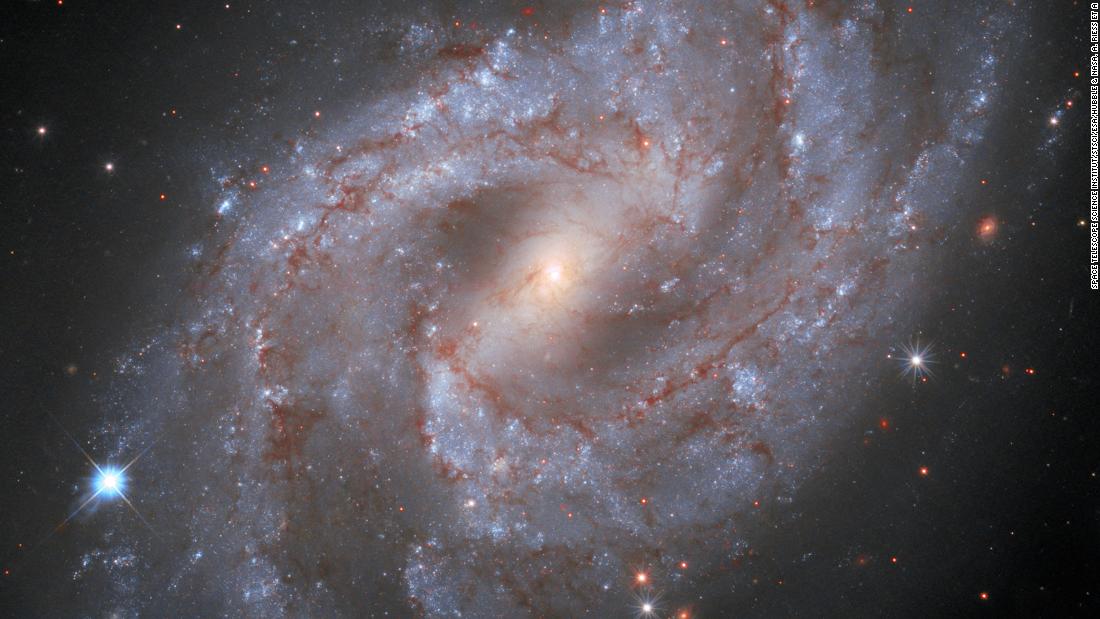
If a supernova is such a powerful blast, a cautious person might wonder: "what would happen to Earth if this happened to a nearby star?" A paper published in the International Journal of Astrobiology in November may have the answer. Geoscientist Robert Brakenridge, a researcher at the University of Colorado at Boulder, claims that he has found evidence here on Earth of nearby supernovae. What form does this evidence take? Ancient radioactive tree rings.
Each year, trees far from the equator grow during the temperate months, and go dormant during the winter. This pattern of growth and slumber creates a ring in the wood of the tree, which is easily seen when a tree is cut down. Rings near the surface of the tree are the newest and ones near the center are oldest. Researchers can count the rings and determine the age of a tree. Even more useful, archaeologists can use the pattern of tree rings in the wood found in ancient structures to help date when they were built.
Brakenridge used this knowledge to predict what might happen to tree rings when supernovae occur. He reasoned that a nearby supernova would give off vast amounts of what is called gamma radiation, which is essentially super powerful light with a frequency that is outside the range of human vision.
The Earth's atmosphere is opaque to gamma rays, absorbing them instead of allowing them to pass through to the Earth's surface. While they are not a direct danger to us, they can have an indirect effect on life, by altering atmospheric chemistry.
Gamma rays can damage atmospheric gases, like the oxygen, nitrogen and carbon dioxide we breathe. It is the effect of these rays on carbon that interests Brakenridge.
Carbon is the atom that is the basis of life. It comes in many forms. The most common is carbon-12; however, there is another form, carbon-14, which is radioactive.
Carbon-14 is naturally produced in the Earth's upper atmosphere by radiation from the sun. It is very rare -- about one part per trillion compared to carbon-12, but it gets mixed in with the more common form of carbon and is absorbed by plants. Animals then eat those plants, and thus all forms of life are a mixture of both types of carbon. The proportions are roughly constant over time in living things.
When a plant or animal dies, it stops taking in all forms of carbon. Since carbon-14 is radioactive, it decays (albeit slowly) while carbon-12 does not. Therefore, scientists can use the ratio of carbon-12 to carbon-14 to accurately determine how long ago the plant or animal died.
Brakenridge hypothesized that a nearby supernova would emit gamma rays that would make more carbon-14 in the atmosphere. That carbon-14 would be absorbed into trees, making a few years' worth of rings more radioactive than normal. Thus, he posited that if he looked at the historical record of annual tree rings and found higher radioactivity in a few adjacent rings, it could be due to the death of nearby stars.
To put this theory to the test, he looked at the 18 supernovae that have been identified within about 5,000 light years and dated by astronomers. (Astronomers have identified supernovae for decades by observing planetary nebula, which is the hot gas blown off into space when a star explodes). When Brakenridge compared those supernovae dates to the radioactivity of tree rings, he found eight matches. He surmised that the increase in radioactivity was caused by the supernovae.
The nearest supernova was located about 815 light years away in the Vela constellation. It went supernova about 13,000 years ago, matching an increase in carbon-14 of 3%. To give some context, the period of atmospheric nuclear bomb testing in the 1960s nearly doubled the Earth's carbon-14 concentration, with relatively mild effects on human health. So, the increases due to nearby supernovae are small.
There are bound to be researchers who disagree with Brakenridge's claim that the increased radioactivity in tree rings is due to supernovae. For one thing, periods of higher solar flares from the Sun can also affect carbon-14 levels. For another, it is not easy to precisely date supernovae without historical records. However, Brakenridge remains convinced that the supernova explanation is a plausible one.
So, is it likely that we'll see a nearby supernova anytime soon? The nearest star that may eventually turn into a supernova is called IK Pegasi. It is located a mere 150 light years away. However, it will be a very long time before it will explode, and it is moving away from Earth.
But there is a star that is showing signs of the kinds of instabilities that precede a supernova. This star is called Betelgeuse and it is located about 640 light years away from Earth. It is the bright red star that forms the shoulder of the constellation Orion. Astronomers predict that it will explode "soon," where soon means sometime within the next 100,000 years. It could go supernova on the human timescale of a few generations, but it probably won't.
If Betelgeuse were to go supernova, life would not be harmed, but we would notice it. Astronomers predict it would be about as bright as a half-moon for over three months and would be visible to the naked eye during the day for about a year. Sky watchers would see its glow at night for several years. While Betelgeuse is not dangerous to us, it will make for a spectacular light show.
And, if Brakenridge is right, future astronomers may start turning their attention from the skies to the forests.
"can" - Google News
November 28, 2020 at 09:08PM
https://ift.tt/3q8jgfU
What tree rings can tell us about the spectacular death of stars - CNN
"can" - Google News
https://ift.tt/2NE2i6G
https://ift.tt/3d3vX4n
Bagikan Berita Ini














Hey Thanks for sharing this blog its very helpful to implement in our work
ReplyDeleteRegards
<a href=" http://www.greenstarlandscape.com/</a>